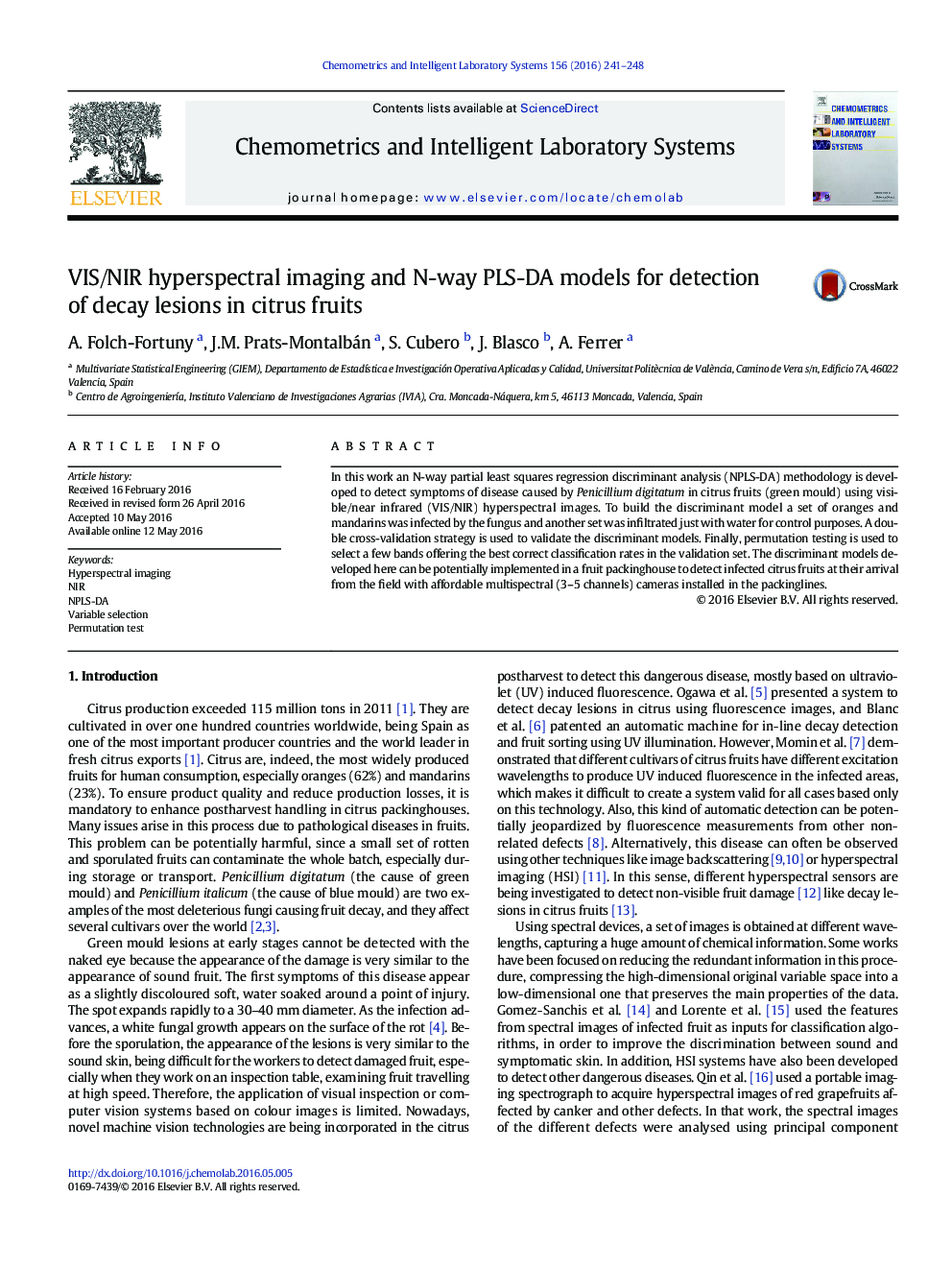| Article ID | Journal | Published Year | Pages | File Type |
|---|---|---|---|---|
| 1181259 | Chemometrics and Intelligent Laboratory Systems | 2016 | 8 Pages |
•N-way PLS-DA applied on features extracted from hyperspectral images is a powerful tool for citrus fruit discrimination.•A double cross-validation strategy is used to validate the discriminant models.•Permutation testing on VIP values is used to select the most discriminant spectral channels.•Multispectral cameras capturing few wavelengths are able to discriminate infected citrus fruits.
In this work an N-way partial least squares regression discriminant analysis (NPLS-DA) methodology is developed to detect symptoms of disease caused by Penicillium digitatum in citrus fruits (green mould) using visible/near infrared (VIS/NIR) hyperspectral images. To build the discriminant model a set of oranges and mandarins was infected by the fungus and another set was infiltrated just with water for control purposes. A double cross-validation strategy is used to validate the discriminant models. Finally, permutation testing is used to select a few bands offering the best correct classification rates in the validation set. The discriminant models developed here can be potentially implemented in a fruit packinghouse to detect infected citrus fruits at their arrival from the field with affordable multispectral (3–5 channels) cameras installed in the packinglines.
